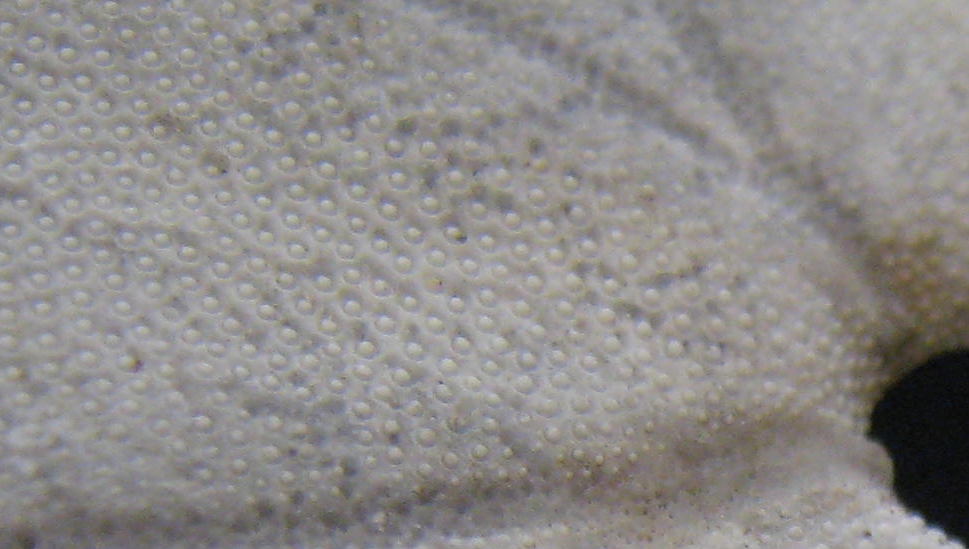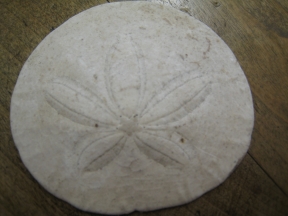May 12, 2008: Sand Dollars Revisited
Pictured here is the Eccentric Sand Dollar, Dendraster excentricus, also known as the Pacific or West Coast sand dollar. The name 'eccentric' sounds intriguing...and makes you want to hang out with the scientist who came up with it...until you learn that it just refers to the fact that these little guys have an 'off-center' pattern. Sand dollars are echinoderms and in the same phylum as sea stars and sea cucumbers. Like sea stars, they have 5-part radial symmetry. They're covered in tube feet, which give the live animals a beautiful purple color.
Tube feet and cilia on the bottom direct food towards the centrally (or off-centrally) located mouth. On the top of the sand dollar, respiratory tube feet are laid out in a very pretty flower pattern. To learn more about sand dollar anatomy, go here. Below are some pictures of sand dollar 'tests', familiar to beach gift-shop surfers.
Does anybody know what the second, smaller hole is for? We have two eccentric sand dollar tests here in the store, and they both have that smaller second hole.
Close-up of tube feet pores.
Sand dollars: eternally popular with potheads.





2 comments
I believe the smaller hole at the bottom is the anal lunule.
Thanks Emily! How’d you know?